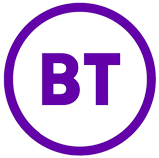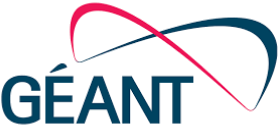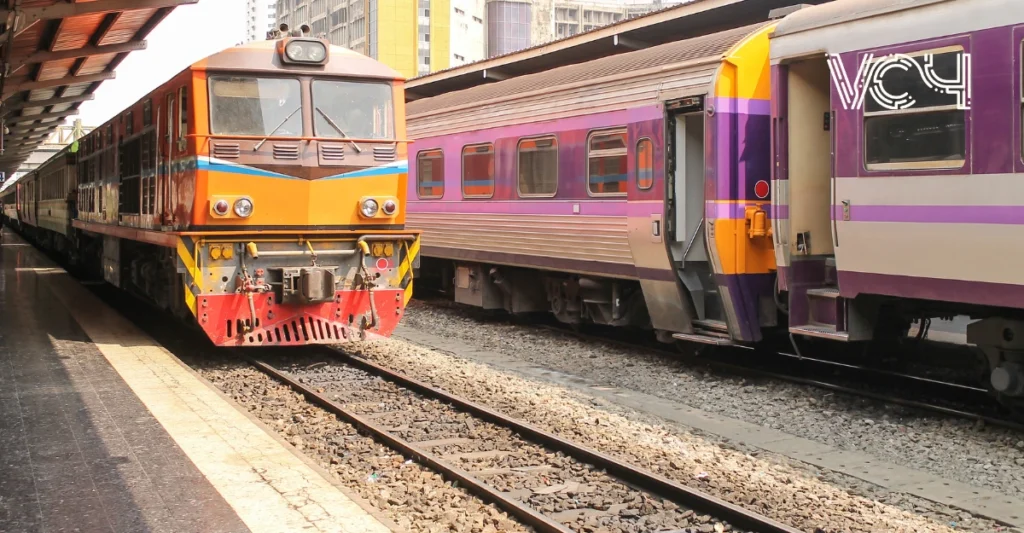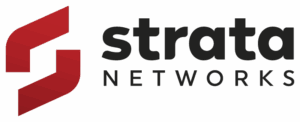Managing Inventory During GSM-R to FRMCS Migration
Trusted by:

















Railway communications are entering a new era. For more than two decades, GSM-R (Global System for Mobile Communications – Railway) has been the standard communication system used across rail networks in Europe and other parts of the world. It has served as the backbone for secure, reliable voice communication between train drivers and control centers. But GSM-R is based on aging 2G technology and is approaching the end of its operational life.
As commercial telecom providers phase out 2G networks, the railway industry must also evolve. With the increasing demand for real-time data, automated operations, and better safety systems, the current GSM-R system is no longer capable of supporting the needs of modern railways. This is where FRMCS (Future Railway Mobile Communication System) comes in. FRMCS is being developed as the successor to GSM-R and is designed to support not just voice, but also high-speed data communication, video, and future applications such as predictive maintenance, smart signaling, and condition monitoring. Based on 4G and 5G technologies, FRMCS is intended to develop future-proof rail communication systems.
However, the transition from GSM-R to FRMCS is not a simple swap. It involves deep planning, cross-functional coordination, and a clear understanding of the network infrastructure. In this article, we’ll explore the key differences between GSM-R and FRMCS, the challenges rail operators face during migration, and best practices for managing the transition smoothly and efficiently.
Understanding GSM-R and FRMCS
Before looking at the migration strategy, it’s important to understand what GSM-R and FRMCS are and how they differ.
What is GSM-R?
GSM-R, or Global System for Mobile Communications – Railway, is a railway-specific version of the GSM mobile communications system. For more than twenty years it has provided secure voice and data communication for train drivers, signalers, and operations staff. It supports functions such as driver-to-signaler calls, group calls for staff, and the data link needed by the European Train Control System (ETCS).
GSM-R networks consist of base stations, cab radios in locomotives, repeaters, antennas, and interfaces with signaling systems. Although it has proven reliable, GSM-R is based on 2G technology. Telecom vendors are phasing out support for 2G equipment, spare parts are becoming scarce, and the pool of engineers with GSM-R expertise is shrinking. The system is reaching the end of its lifecycle.
What is FRMCS?
FRMCS, the Future Railway Mobile Communication System, is the replacement for GSM-R. It is built on 5G principles and has been defined by the International Union of Railways (UIC) as the long-term communications solution for rail. Unlike GSM-R, which is limited to voice and simple data, FRMCS supports a wide range of advanced applications. These include real-time video for situational awareness, integration with IoT sensors for predictive maintenance, and the ability to run multiple virtual networks through network slicing.
FRMCS will coexist with GSM-R during a transitional period that could last ten to fifteen years. This means that railway operators will need to manage a hybrid network where some assets are GSM-R only, some are FRMCS capable, and some support both. This hybrid stage is one of the biggest challenges of migration. Let’s look at some key differences below in the table:
| GSM-R | FRMCS |
| Based on 2G GSM technology | Built on 4G and 5G standards |
| Primarily voice communication | Support voice, video, and high-speed data |
| Closed, legacy system | Open, scalable, future-proof |
| Basic integration with rail systems | Full integration with modern rail applications |
| Declining vendor support | Actively developed with long-term support |
Why Migration is Necessary
GSM-R’s technology is outdated. Many telecom operators are shutting down 2G networks, which puts pressure on railway operators to find alternatives. At the same time, rail operations are becoming more data driven.
From condition monitoring and real-time video surveillance to predictive maintenance and autonomous operations, future railways will depend on a communication system that can handle more than just voice. FRMCS is the answer to that need. But migrating from GSM-R to FRMCS is not just a technology upgrade. It touches every part of a railway operation, including planning, safety, procurement, compliance, and service delivery. That’s why migration must be carefully managed.
Inventory Matters in Transition
Before replacing equipment or upgrading towers, operators need to answer one critical question: What do we have today? Most GSM-R networks were built over decades, involving multiple vendors, contractors, and system integrators. Records may be incomplete, out of date, or scattered across different departments. Without an accurate inventory, planning a safe and efficient migration is nearly impossible.
What should be in the inventory?
- Physical infrastructure: base stations, antennas, shelters, cables, power supplies, towers
- Logical elements: IP addresses, logical circuits, frequency allocations, routing paths
- Service dependencies: which systems rely on which links or devices
- External assets: leased lines or equipment shared with other providers
Why it matters
- You cannot replace what you cannot locate or identify
- Planning without inventory leads to duplication, overspending, and risk
- Teams need to understand dependencies before taking anything offline
- Simulation, impact analysis, and scenario planning require data accuracy
How platforms like S2C help
Service2Create (S2C) from VC4 provides a single source of truth for all physical, logical, and service-related infrastructure. It helps teams:
- Visualize assets on a GIS map
- Track lifecycle status of every component
- Integrate live updates from NMS systems
- Understand the relationships between services and infrastructure
- Simulate future upgrades or migration paths safely
Challenges in Migrating to FRMCS
1. Complexity of Legacy Infrastructure
GSM-R networks are extensive and deeply embedded in railway operations. They cover thousands of kilometers, with infrastructure that spans urban, rural, and remote areas. Every node, link, and service must be accounted for before it can be upgraded or replaced.
2. Parallel Operation of GSM-R and FRMCS
There will be a transition period where both systems must run side by side. This hybrid environment increases complexity and requires precise coordination. Teams must maintain services on the old network while rolling out the new one in stages.
3. Service Continuity and Safety
Rail communication is safety critical. Any outage can delay trains, disrupt operations, or even cause accidents. Migration plans must ensure continuity, with backup systems and rollback procedures in place.
4. Regulatory and Vendor Pressures
Regulatory bodies are setting deadlines for FRMCS readiness. At the same time, vendors are ending support for GSM-R components. Operators are under pressure to move quickly while ensuring long-term stability and compliance.
5. Internal Coordination
Telecom teams, infrastructure planners, field engineers, IT staff, and external vendors all play a role in migration. Without workflow automation and shared visibility, miscommunication and delays are almost guaranteed.

Best Practices for a Smooth Migration
1. Start with a Full Inventory
Use modern inventory software like S2C to create a real-time view of your existing infrastructure. Include both physical and logical elements. Make sure this inventory is accessible and regularly updated.
2. Use GIS Tools to Plan the Migration
Map your network visually. Simulate how future FRMCS assets will be deployed. Identify gaps in coverage, overlap with GSM-R systems, and areas where infrastructure needs reinforcing.
3. Tag Assets by Status
Clearly label each asset or link as “In Service”, “To Be Migrated”, “Planned for Decommissioning”, or “New FRMCS”. This helps every team stay aligned and track migration progress.
4. Automate Reconciliation with Network Systems
Connect your inventory to live network systems so that changes in the field automatically update your records. This ensures planners are working with accurate data at all times.
5. Coordinate Tasks with Workflow Tools
Use built-in workflow engines to assign, track, and approve migration steps. From hardware installation to service cutovers to testing, every action should be documented and assigned.
6. Monitor Capacity and Service Health
FRMCS will carry more data than GSM-R. Plan capacity upgrades, monitor bandwidth usage, and use forecasting tools to stay ahead of growing demand.
7. Communicate Internally and Externally
Send automated alerts to operations teams about planned work or known disruptions. Keep regulatory authorities informed of progress. Document all communications for transparency.
How VC4’s S2C Software Supports Rail Operators
At the heart of a successful GSM-R to FRMCS migration is the ability to see, plan, track, and coordinate across complex infrastructure and services. This is exactly where the Service2Create (S2C) platform fits in.
S2C brings together all the tools’ operators need to manage their infrastructure and processes, from initial planning to full-scale deployment. It combines inventory, GIS, capacity management, workflows, and automation into a single platform. Here is a practical overview of how S2C supports each key migration need:
| Migration Need | S2C Capability |
| Full infrastructure visibility | Unified inventory for physical, logical, and service layers |
| Planning multiple rollout scenarios | GIS-based planning, current vs. future modeling |
| Tracking hybrid network operations | Lifecycle and status tracking of assets and services |
| Live sync with network systems | Automated reconciliation with NMS and EMS |
| Change coordination | Customizable workflows with task assignments and SLAs |
| Managing faults during migration | Integrated trouble ticketing with impact tracking |
| Performance and capacity monitoring | Real-time dashboards and historical trend reporting |
| External communication | Automated planned work notices and service impact alerts |
S2C is vendor-independent and supports all major technologies used in railway telecom networks, including fiber, copper, WDM, IP/MPLS, and leased lines. It also covers related systems like power, shelters, and environmental equipment. This makes it a true end-to-end infrastructure management platform.
Looking Ahead: Preparing for What’s Next
Migration to FRMCS is not just about retiring old systems. It is about laying the foundation for a smarter, more connected railway network. With FRMCS in place, operators can begin supporting a wide range of advanced use cases, including:
- Live diagnostics from trains and rolling stock
- Predictive maintenance alerts based on real-time data
- Smart sensors across tracks, stations, and control rooms
- Continuous video surveillance with intelligent alerts
- Automated signaling and decision support systems
All of these capabilities rely on having a modern, well-managed communication network. That network must be built on accurate infrastructure data, planned with precision, and operated with clarity and control. This will bring about the much needed transformation. Platforms like Service2Create are purpose-built for this transformation. Whether you are just starting to plan your FRMCS rollout or are already in the middle of testing, having a clear roadmap and the right software can make all the difference.
If you want to explore how S2C can support your GSM-R to FRMCS migration, or if you would like a tailored demonstration based on your network setup, reach out to the VC4 team.






